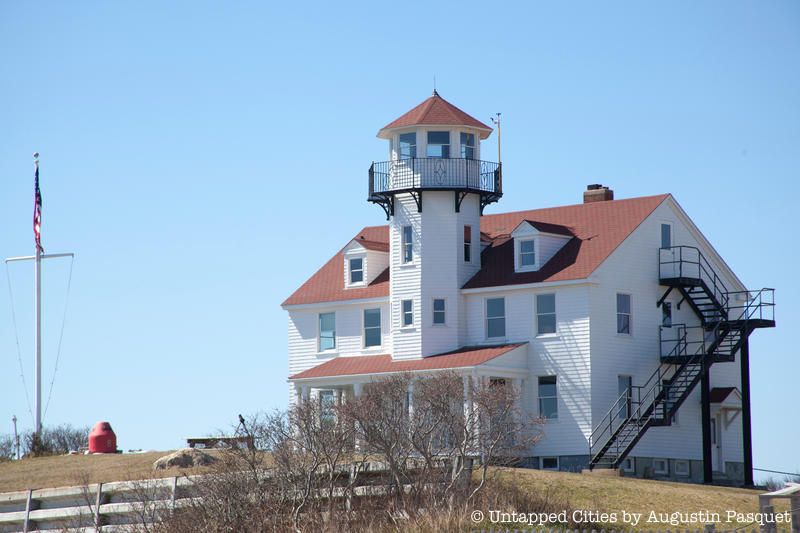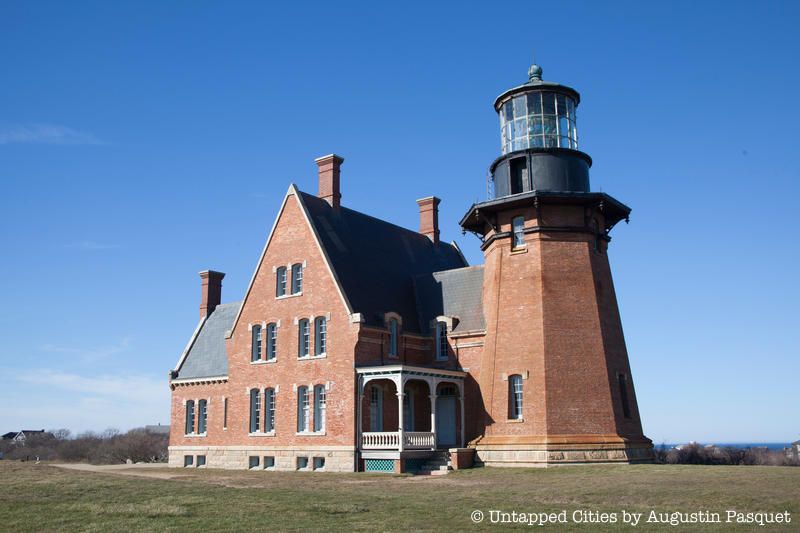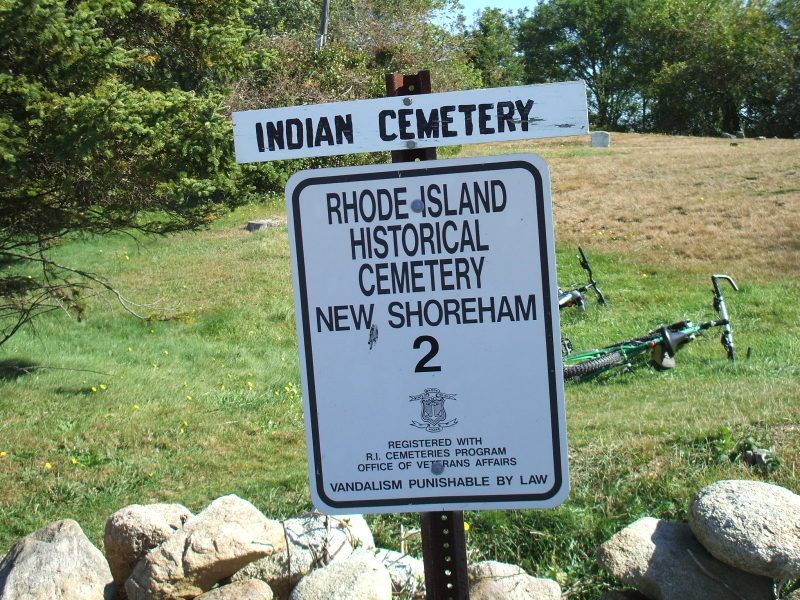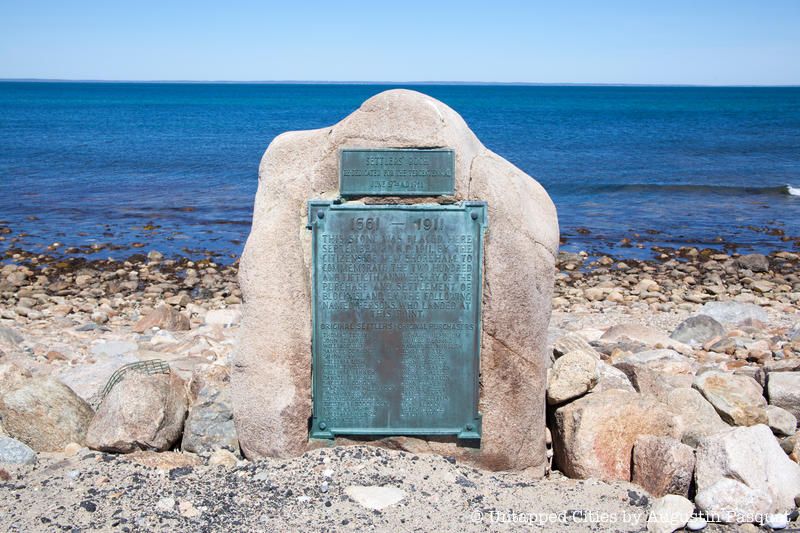100th Anniversary Great Nave Tour at the Cathedral of St. John the Divine
Celebrate the 1925 construction of the stunning nave inside the world's largest Gothic cathedral!



There aren’t many places left that still feel like the old fishing villages of the old settlers, but Block Island, located off the coast of Rhode Island and Long Island, has managed to maintain that vibe with its rocky coastline, sparsely built rolling hills, and quaint historic streets. This vacation destination, a little further off the beaten path, is also home to numerous hard core year rounders who revel in the brusque honesty of the community (people leave their doors unlocked here) and the changing of the seasons. There’s a reason why Block Island was named one of the “Last Great Places” by The Nature Conservancy, noting the diversity within the 134 acres dedicated to a wildlife refuge on this rocky island.
Block Island was named for Dutch explorer Adrian Block, who discovered a community of Narraganset Indians there in 1614. The earliest American settlers relocated to the island from the Massachusetts Colony in 1662.
In the high season, you can get to Block Island by high speed ferry from Newport, Rhode Island and Fall River, Massachusetts (pedestrian and cyclists only). You can also take both a high speed and traditional ferry from Port Judith, Rhode Island – the traditional ferry is what you can take your car on.
You can also take a ferry from New London, Connecticut or Orient Point, Long Island during the high season. On the off-season, only one ferry heads to and from Block Island – the traditional ferry from Port Judith, Rhode Island. It only leaves a few times a day and has a limited capacity for cars, so make sure to book early. The island is still great without a car though, and you can rent a scooter or bike easily to get around.

Block Island had a treacherous reputation in the maritime world, eagerly taking ships aground in the early 1800s. According to the website Lighthouse Friends, in a twenty year period during this era, “thirty-four schooners, fifteen sloops, eight brigs, and two larger ships all ran aground.” The fate of the lighthouses on the northern tip have been almost equally tragic – this is the fourth lighthouse, with the first swept out to sea in the 1830s due to rapid erosion of the sand and gravel.
The current structure was built in 1867 out of Connecticut granite. The sandy-colored, rusticated structure has a Victorian architecture influence and an iron lantern tower at the top. The lighthouse was decommissioned in 1973 and came under the jurisdiction of the U.S. Fish and Wildlife Service and later the town of New Shoreham in 1983, which proceeded with two decades of preservation efforts. A small museum on the first floor is open during the high season and the lighthouse was re-established as a working light in 2010.
The surrounding sandy dunes make for a nice exploration around the lighthouse, following a walk along Cow Cove to access the site.

The red roofed buildings of the Coast Guard station, Station Block Island, at the entrance of the Great Salt Pond makes an impact from whichever way you approach. The main building of the 1930s-era complex is floor floors, including a basement level with a first floor porch and lookout turret that extends above the roofline. The original Coast Guard station, built in 1871, was located outside the entrance to the pond but the use of motorized rescue boats necessitated a relocation.
Station Block Island only currently operates on the on-season and the buildings were given to the Town of Shoreham in 1996. Access the station via Champlin Road and take a pedestrian path down to the waterfront.

The Block Island National Wildlife Refuge constitutes 134 acres of the northern end of the Block Island. In fact, 40% of the island is set aside for conservation. The National Wildlife Refuge here was first set up in 1973, with an initial 28 acres transferred over by the U.S. Coast Guard. According to the official website, the refuge is home to over 70 species of migratory songbirds, which make a stop on Block Island during the annual migration. The refuge also hosts the largest gull colony in the state of Rhode Island.
According to the brochure from the U.S. Fish & Wildlife Service about Rhode Island National Wildlife Refuges, “Hundreds of small ponds and fruit-bearing shrubs provide essential water and food for more than 250 species of birds who come to rest there. Secondly, Block Island’s international fame is that it is home to 15 rare or endangered species…Block Island is one of only two places in the world where barn owls nest in sea cliffs rather than in man-made structures or inland cliffs.”
The Sacred Labyrinth is one of Block Island’s mysterious spots – designed for contemplation off Corn Neck Road. The Block Island Tourism board recommends that all visitors should “be sure to look inside the wooden box tucked under a crabapple tree. You’ll find notebooks where previous visitors have recorded their own personal thoughts brought on by their visit to this special spot. Share your own musings if you’re so inclined.”
The labyrinth is a publicly accessible spot on private property, marked by a wooden staircase and a sign.

There’s a ton of beachfront on Block Island but one of our favorites is a spot just east of Barlows Point. Head on the Mohegan Trail and turn down Snake Hole Road at the Painted Rock. The dirt road might look like it ends at a residential house but the Vaills Beach Trail continues off from the side. It’s a small adventure for a big payoff, with a watery ravine decline which opens up onto an empty, rugged beachfront. You also get a great view of the wind turbines offshore from here.
Built in 1852, the Spring House Hotel is one of the many places to stay on Block Island. It also has the distinguished title of being the oldest and largest hotel. But The Barn at the hotel is a pint-sized restaurant that seats 40 and only operates in the off-season, with a great farm to table menu and open kitchen. During the high season, it’s reserved for private dining experiences and events.
Located at an intersection in Old Harbor, the Block Island Historical Society is located in the former Woonsocket House, a hotel built around 1871 on the homestead of the Rose family. The red mansard roof tops a white wooden structure with a front porch. The building is part of the Old Harbor Historic District.
The historical society is open by appointment in the off season and daily from 11am to 4pm starting in June. Exhibitions tell the story of not only the colonial settlers of Block Island but also the original Manisses Indians.

This Gothic Revival lighthouse from 1874 on the south shore atop Mohegan Bluff is a national landmark. It was noted for both its architectural and technological sophistication in the official landmark designation report, which also stated that “the lighthouse and keepers quarters were meant to be showpieces for the U.S. Lighthouse Bureau. They were among the most elaborate built during the 1870s. ”
In the summer, the lighthouse is open to the public and for guided tours to the top. The bottom of the lighthouse has a museum and gift shop. The latest restoration was completed in 2003.

Water Street, the main stretch when you first get off the Judith Point ferry, is part of the Old Harbor Historic District and is full of stately 18th century Second Empire-style architecture. In addition, the nomination form for the historic district notes that “today, with only minor improvements, and the addition of a new ferry landing where the fish shacks were originally, the harbor and basin remain essentially unchanged.”
The historic district include inns, hotels, churches, homes, and retail buildings – the oldest which dates to circa 1865.

Photo by Stuofdoom.com, used with permission
Isaac’s Corner, located at the intersection of Center Road, Lakeside Drive, and Cooneymus Road, is named for Block Island’s last full-blooded Native American who died in 1886. Nearby, there is an Indian burial ground and a stone monument, installed to honor the Manisses Indians. At this corner sits also the home of musician Arthur Penn who lived here in the 1920s.

On the way to the Block Island North Lighthouse, take a moment in front of Settlers Rock, placed at this spot in 1911 to commemorate the 250th anniversary of the purchase and settlement of Block Island. It also lists the original purchasers and settlers of the island.
Other historic spots to look out for include the 350 miles of stone walls that snake through the island.
Next, check out 27 Historic Estates to Visit in the Hudson Valley and 12 Gilded Age Mansions of the Berkshires
Subscribe to our newsletter